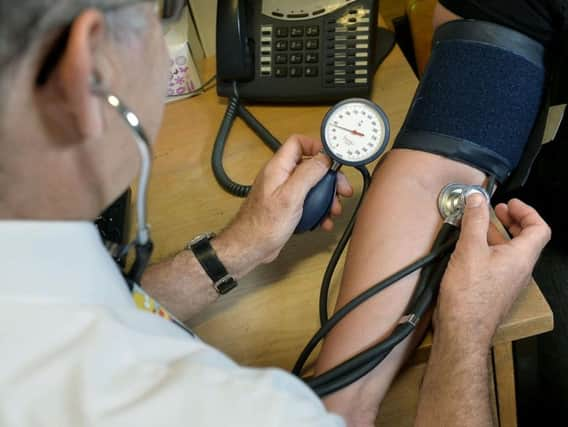More to be done on public health in Wigan despite improvements


Comprehensive statistics from the House of Commons Public Library shows how many people suffer from seven illnesses and health issues across the different constituencies making up the borough.
Other news; Huge fly-tipping crackdown in borough sees more fines handed outFigures for neighbourhoods in Wigan, Makerfield and Leigh also show where the hotspots for wellbeing and health troubles can also be found.
Advertisement
Hide AdAdvertisement
Hide AdOverall the data shows there is still more work to do, with the majority of stats showing local constituencies just above the figures for Greater Manchester, the North West and England as a whole.


However, while a local MP said the stats were proof the borough needs more assistance to combat problems going back decades the town hall said in fact the data showed Wigan was going in the right direction.
The statistics cover rates of asthma, chronic obstructive pulmonary disease (COPD), dementia, depression, diabetes, high blood pressure and obesity.
And Wigan and Makerfield’s figures are higher than or equal to the regional averages in every single one of the categories.
Advertisement
Hide AdAdvertisement
Hide AdLeigh, on the other hand, has rates of dementia, depression and diabetes which are all below the North West average and identical to or lower than the figure for Greater Manchester.
Unsurprisingly the least life-threatening conditions are the most common but the figures still show the sheer scale of illness and health difficulties in the borough, with almost one in six people suffering high blood pressure, with the highest figures of 16.3 per cent recorded in Wigan and Makerfield.
By contrast the average for Greater Manchester is 13.4 per cent and that for the North West as a whole 14.5 per cent.
Obesity was the second-biggest problem, with 12 per cent of Leigh and Makerfield residents severely overweight and 11.9 per cent of Wiganers in the same category.
Advertisement
Hide AdAdvertisement
Hide AdDepression is also affecting more than one in 10 people, with the condition affecting 11.7 per cent of people in Wigan and Makerfield and 10.9 per cent in Leigh.
The figures also show where the health blackspots are within each constituency.
In Wigan, Shevington had the biggest problems with obesity, asthma and high blood pressure, the latter affecting 18.2 per cent of those living in the area.
Wigan also has high levels of depression, with the mental illness suffered by 15.7 per cent of people in Pemberton South and 15.6 per cent of those living in Laithwaite and Marsh Green.
Advertisement
Hide AdAdvertisement
Hide AdCOPD was most prevalent in Aspull Moor and dementia in Marylebone.
Ashton-in-Makerfield North and South had some of the highest prevalences of health problems in Makerfield but Orrell and Winstanley topped the table for issues with high blood pressure, with 18.7 per cent of those living there affected.
Orrell and Winstanley also has most people living with diabetes whereas the biggest issue with depression was in Wigan South and Hindley East had the largest problem with obesity.
Neighbourhoods in Atherton and Tyldesley accounted for the most serious health issues in Leigh apart from Golborne, where the constituency’s biggest problems with diabetes and high blood pressure are located.
Advertisement
Hide AdAdvertisement
Hide AdOther parts of Atherton also have the highest rates of many health problems in the Bolton West constituency.
Makerfield MP Yvonne Fovargue said it was clear there were significant health challenges in the area and threw down the gauntlet to the authorities to provide more funding to address them.
Ms Fovargue said: “We know from our history that many long standing conditions are a result of Wigan’s industrial past.
“New challenges have now emerged, not least the issue of air quality, that together with long-standing social issues like quality of housing, poverty and working conditions combine to put pressure on the NHS and public health budgets.
Advertisement
Hide AdAdvertisement
Hide Ad“There are some great examples of how Wigan is addressing these complex issues through collaboration between the council and health bodies.
“But as the statistics show this is a huge issue across many northern communities and investment not austerity is the answer along with education and preventative strategies.”
However, Wigan Council director of public health Professor Kate Ardern said Wigan being more or less in line with North West averages was actually a very good result for schemes helping residents get fitter.
She said: “Wigan Council is nationally recognised as a leading authority in public health practice. Through our dedication to transforming and empowering people to look after their health through The Deal for Health and Wellness we have seen great improvement in public health outcomes over the last decade with more residents now living longer and better lives.
Advertisement
Hide AdAdvertisement
Hide Ad“These results show we are broadly in line with the North West average for conditions such as dementia, depression and COPD.
“We have a fantastic weight loss management service here in the borough which has proven really successful in encouraging people to get active and eat healthily. Through the Daily Mile in 19 of our nurseries and 62 schools we are also creating a new generation who don’t think twice about making exercise part of their daily routine.
“Through the ground-breaking Heart of Wigan we have also been raising awareness of how to look after your heart through promoting simple exercises like one-mile walks mapped around hearts in our parks. And with many people taking up the free NHS health checks and using our HealthyRoutes shops where they can get their blood pressure tested we can help more people get the right support to bring high blood pressure to an acceptable level.
“The number of people smoking in the borough is also at record low levels with smoking prevalence falling from 25.5 per cent in 2010 to 15.6 per cent which should continue to improve our health outcomes.
Advertisement
Hide AdAdvertisement
Hide Ad“There is always more that can be done to improve our figures but we are confident that we will continue to see the prevalence of many conditions fall further as people do their part of The Deal by looking after their health.”
To find out more about HealthyRoutes, weight management support and stop smoking advice head to www.wigan.gov.uk/healthyroutes website.